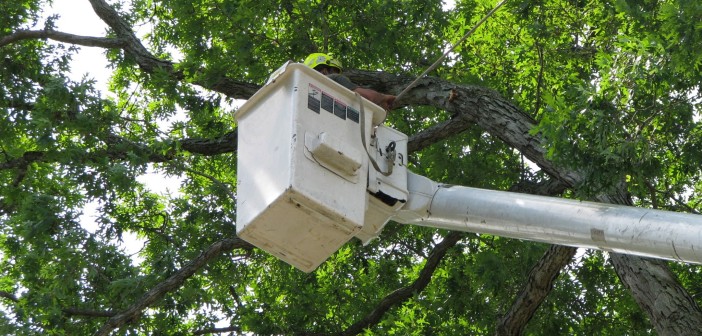Trees are a great asset to most properties. Not only do they add beauty and color, but they provide shade and are great additions. Unhealthy trees result in numerous problems that pose a threat to your urban landscape and quite possibly to people and pets. Removing hazardous trees because they are either dead, dying or a nuisance and in the way are important to protecting property values as well as the health of people who normally admire a tall, leafy maple on an autumn day.
Getting rid of trees should be left to professionals and there are more than enough compelling reasons not to try removing a tree yourself. There are reports every year of deaths resulting from someone falling out of a tree or being hit by falling branches while trimming. If it’s not loss of life, reports tell stories of fractured bones and concussions. For you own health and the health of the rest of your landscape, call a professional to remove a troubled tree. Here are a handful of reasons why a professional tree remover is your best bet.
Permits and licenses
In most municipalities, to remove a tree you will need a permit. Those who remove trees for a living know what needs to be done before the first branch is trimmed, the first stump is removed. These professionals also are licensed and bonded, which offers you peace of mind in the event that something does occur. They carry insurance and should provide proof of liability for personal and property damage, as well as worker’s compensation.
Not everyone who says they can remove a tree understands how to treat and remove trees. Those with proper licenses and permits will be able to manage your problem tree to provide a healthy future for the rest of your landscaping. Look for a professional arborist who is certified and a member of a professional organization. Do a little bit of homework before leaping into a decision; it will pay off in the end.
Dangers
Nearly 1,300 people died while trimming and removing trees from 1992 to 2007, according to statistics provided by the U.S. Census of Fatal Occupational Injuries. In 2012, 60 people reportedly were killed when trying to remove a tree. This proves that disaster is just around the corner if you try to remove a tree yourself. Working with dangerous tools at significant heights is just asking for trouble. Professionals who are trained on how to work high above the ground are less likely to be injured and less likely to injure someone or something on the ground. Protect yourself, your property and your other trees and let the professional do his/her job.
Landscape health
According to Minnesota Tree Surgeons, disease and insects can infect trees that result in the tree’s removal, which is one of the things they see most often. But these infestations also threaten the rest of your landscaping. Professional tree removal services are specifically trained to maintain and manage the good and the bad trees. They can properly diagnose the problem and will not, hopefully, remove a tree that is healthy. In addition, they have the proper tools to ensure that disease will not spread from one job to another.
Time to hire
Once you have narrowed the list to who to hire, ask for referrals. There are also websites that will list professional tree removers in your area, and often there are comments and recommendations available for free for you to read. The professional should have a standard contract prepared for you to sign when the time comes to make that hire. Make sure the contract includes all costs associated with the removal of the tree, including who is responsible for cleaning up and disposing of the tree.
It is important to include protection in case the any diseases are spread to other trees. And be sure that the professional sticks to an adhered time frame to complete the project.




